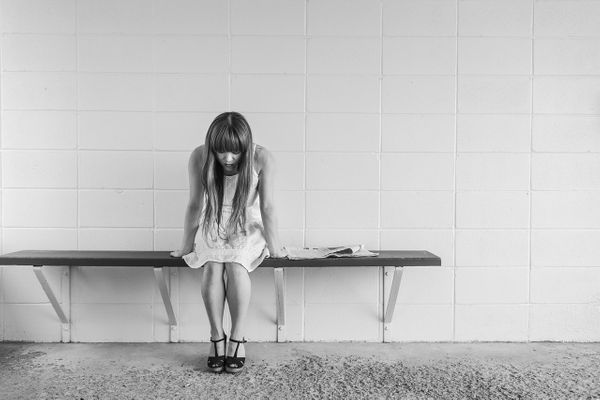2.3.3
Categorisations
Banding, Streaming and Setting
Banding, Streaming and Setting
Banding, streaming, and setting involve organising pupils according to their actual or predicted ability.


Labelling
Labelling
- Banding, streaming, and setting involve organising pupils according to their actual or predicted ability.
- Such policies are often linked to pupil labelling.


Ball
Ball
- Ball found that those pupils in higher sets and streams were ‘warmed up’ to achieve highly, while those in lower streams and sets were ‘cooled out’ to encourage them to follow lower status vocational and practical courses that require lower levels of academic success.


Keddie
Keddie
- Streaming can have a negative impact on lower ability pupils’ learner identities and encourage the self-fulfilling prophecy, including the development of anti-school attitudes.
- Keddie found that lower-stream pupils were often not given the same access to knowledge as those in higher streams, leading to further underachievement.
Educational Triage
Educational Triage
Educational triage refers to pupils being divided into groups based on predicted performance by the school.


Gillborn and Youdell
Gillborn and Youdell
- Gillborn and Youdell found that schools tend to divide pupils into three groups based on how well they expect them to do, this is known as ‘educational triage’.


The groups
The groups
- The first group is made up of pupils who are likely to succeed without any extra help.
- In the second group are pupils who might succeed with extra help.
- The third group is the ‘no-hopers’ who are unlikely to succeed even if they are given help.


Explanation
Explanation
- Educational triage is encouraged by the pressures on teachers and schools to obtain good results for the school league tables and other outward expressions of school success.


Consequences
Consequences
- Educational triage places the emphasis on those people with a higher chance of success, while it can be argued that the ‘no-hopers’ (who are often from disadvantaged backgrounds) are neglected.
1Theory & Methods
1.1Sociological Theories
1.2Sociological Methods
2Education with Methods in Context
2.1Role & Function of the Education System
2.2Educational Achievement
2.3Relationships & Processes Within Schools
3Option 1: Culture & Identity
3.1Conceptions of Culture
3.2Identity & Socialisation
3.3Social Identity
3.4Production, Consumption & Globalisation
4Option 1: Families & Households
4.1Families & Households
4.2Changing Patterns
4.3The Symmetrical Family
4.4Children & Childhood
5Option 1: Health
5.1Social Constructions
5.2Social Distribution of Healthcare
5.3Provision & Access to Healthcare
5.4Mental Health
6Option 1: Work, Poverty & Welfare
6.1Poverty & Wealth
7Option 2: Beliefs in Society
7.1Ideology, Science & Religion
7.2Religious Movements
7.3Society & Religion
8Option 2: Global Development
8.1Development, Underdevelopment & Global Inequality
8.2Globalisation & Global Organisations
8.3Aid, Trade, Industrialisation, Urbanisation
9Option 2: The Media
9.1Contemporary Media
9.2Media Representations
10Crime & Deviance
10.1Crime & Society
10.2Social Distribution of Crime
Jump to other topics
1Theory & Methods
1.1Sociological Theories
1.2Sociological Methods
2Education with Methods in Context
2.1Role & Function of the Education System
2.2Educational Achievement
2.3Relationships & Processes Within Schools
3Option 1: Culture & Identity
3.1Conceptions of Culture
3.2Identity & Socialisation
3.3Social Identity
3.4Production, Consumption & Globalisation
4Option 1: Families & Households
4.1Families & Households
4.2Changing Patterns
4.3The Symmetrical Family
4.4Children & Childhood
5Option 1: Health
5.1Social Constructions
5.2Social Distribution of Healthcare
5.3Provision & Access to Healthcare
5.4Mental Health
6Option 1: Work, Poverty & Welfare
6.1Poverty & Wealth
7Option 2: Beliefs in Society
7.1Ideology, Science & Religion
7.2Religious Movements
7.3Society & Religion
8Option 2: Global Development
8.1Development, Underdevelopment & Global Inequality
8.2Globalisation & Global Organisations
8.3Aid, Trade, Industrialisation, Urbanisation
9Option 2: The Media
9.1Contemporary Media
9.2Media Representations
10Crime & Deviance
10.1Crime & Society
10.2Social Distribution of Crime
Unlock your full potential with Seneca Premium
Unlimited access to 10,000+ open-ended exam questions
Mini-mock exams based on your study history
Unlock 800+ premium courses & e-books